Originally published in The Midden, 41(3), 11-14.
2009.
By Grant Keddie
An important project launched by the Archaeological Society of British Columbia in the 1970s was the documentation of artifacts in private collections. Many of these collections are now dispersed, making this record an important contribution to the understanding of past human behavior—especially in the case of rarer objects.
In the spirit of this project, I will describe four examples of rare human images from private collections and one from the Royal B.C. Museum collection. These human figures, one incised on siltstone and four carved of elk antler, may tell us about the kinds of clothing and other body adornment used by their makers.
All examples are undated artifacts with only site provenience. Three of these are similar to the antler figure type discussed by Carlson (1983:123-124, 201) and which he suggests “appear to date between A.D. 200 and A.D. 1200”. The incised siltstone artifact is more likely to date to an earlier period.
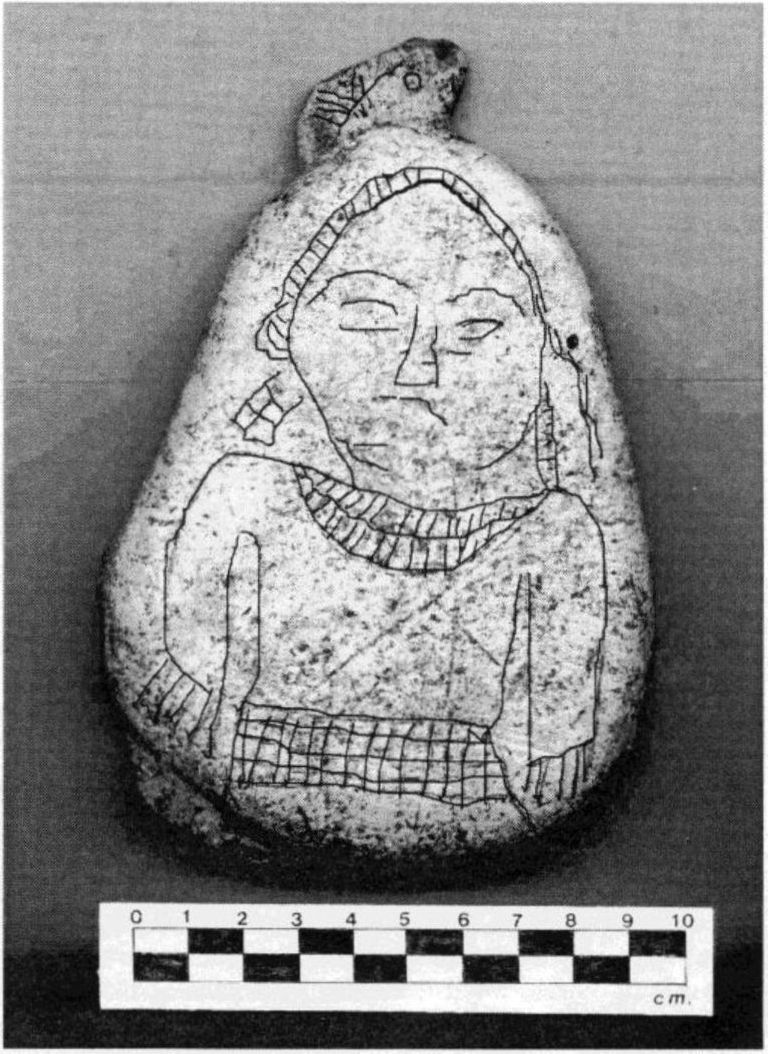
Figure 1 shows a natural siltstone concretion with the etching of a human image on one side. The other side has extensive scratching with vague elements of a similar human image. I have computer enhanced the etchings on one side by enlarging them and drawing a black line only where there is an obviously visible cut mark. A small natural protrusion at the top is incised to represent a snake’s head (Figure 2). This artifact was recovered at the Blue Heron Lagoon site. DeRu-1. in Tsehem Harbour north of Sidney.
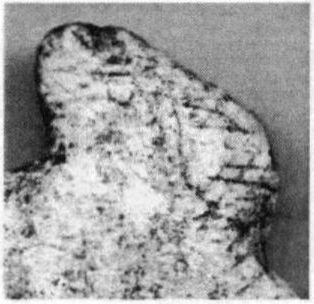
Since this large shell midden site was first excavated by Diamond Jenness in 1935, over ten projects have revealed a strong early component dating between 2000 and 4000 years ago, as well as a smaller amount of later deposits (see Dady 2002 with references). In the 18th century, a village known as Sai ‘klam was located in this bay. The inhabitants moved to Patricia Bay in Saanich Inlet, where they are today known as the Tseycum First Nation.
The etched person (probably a female?) is wearing what appears to be some kind of woven chest covering—that may stand alone or be part of an upper fitted shirt-like garment. I have ruled out the idea that this chest adornment is a multi-layered necklace based on the downward direction of the design. The person is wearing a short skirt which is also likely woven of either plant fiber material or strips of woven or sewn fur. The designs above the head may represent some kind of head piece with large items attached and hanging at the side of the head like ear rings. Similar hanging items are seen on bone carvings on the lower Columbia River (Strong 1959:123, fig. 41). These may be the same as the item worn during a puberty ceremony—as represented in the photo of an Ehattisat girl from the west coast of Vancouver Island (Figure 3).

A woven chest covering can also be seen on two carved antler figures, one from Sucia Island shown as figure 11-4 in Carlson (1991) and figure 78 in Wright (1991a), and a very similar one, excavated at Conway Washington, as Figure 5 in Wright (1991b). The Sucia Island example (Burke Museum #2.5E603) has double lines near the hands and feet, which Wright interprets as “bracelets and anklets.” These double lines could also be interpreted as tattoo lines as Boas gives examples that he observed in the same locations on the body (Boas 1890:574. fig. 11).
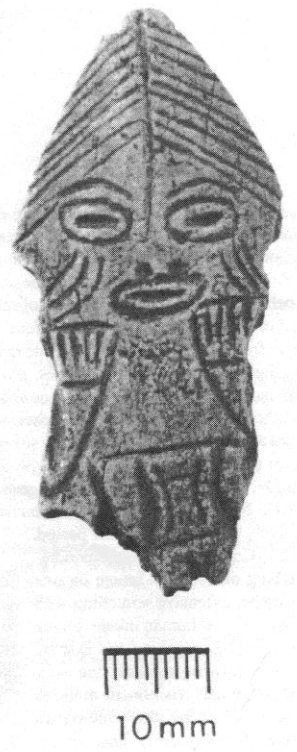
Figure 4, from the Blue Heron Lagoon site, was catalogued as DeRu 1:3163 at the RBCM in 1983, but after its return was lost from the private collection.
It is an upper portion of a carved elk antler human figure (L = 60 mm, W = 29 mm. Th = 6 mm). The evenly parted hair on a high forehead is possibly indicative of an artificially shaped head. On each side at the base of the hair are remnants of broken off extending ear holes, best seen from the unworked back side. One might speculate that the carving once had small earrings suspended from these broken off ear holes. On both cheeks are three long facial markings. These are likely cheek tattoo strips as reported being used by “Cowichan and Nanaimo women” (Bamet 1955:74).
The hands are held up to the shoulders and the person appears to be wearing a skirt with a pattern on its front. It is difficult to tell what the bottom part looked like. The small grooves near the middle may indicate a female figure as is clear on the specimen shown in Keddie (1987:2)—subsequent to this previous Midden article, I was able to show that the carving came from DcRu-63 in Esquimalt Harbour). Like that specimen, this one may have had short legs extending down from the waist area. The concave notch below the figures right arm is not broken, but a finished curved indentation, which likely had a matching one on the other side. The short width would eliminate the likelihood of the object being the top part of a comb.
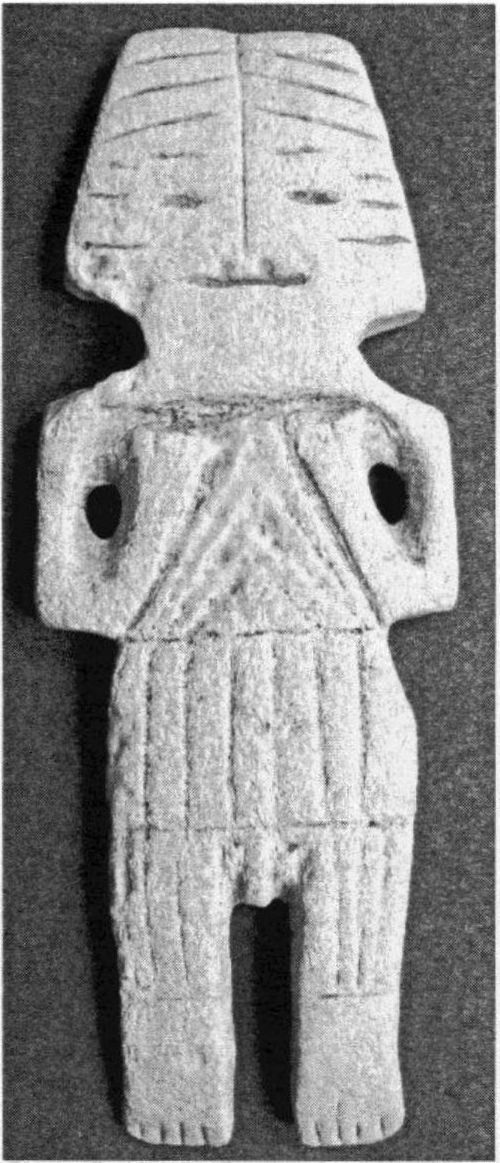
The Figure 5 carving was surface collected at a midden located at the south end of Montague Harbour on Galiano Island (RBCM, DfRu-7:8). Like several other antler carvings its hands are held up on his chest. It has obvious male sex organs showing, yet seems to be dressed in fitted pants and a patterned top. The series of inverted V patterns on the chest area likely represent some kind of woven material, while the pants could be sewn sections of animal furs. The head is an unusual square shape. The hair line goes down to the nose. The mouth, nose and eyes are poorly defined slots. The back of the figure has no carving. The maximum length is 89 mm and width 33 mm. It weighs 13.3 grams.
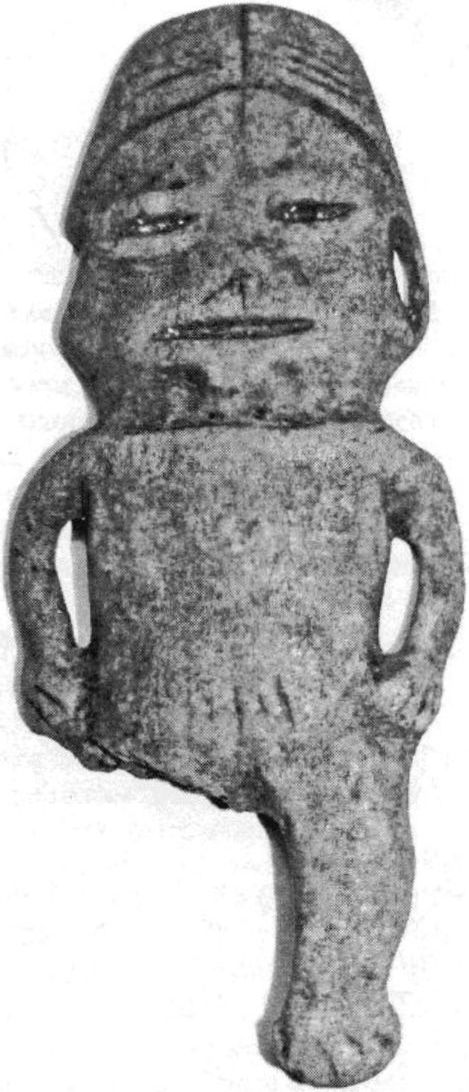
The elk antler carving (possibly a woman?) shown in figure 6 was found at low tide on the south end of Valdes Island. I only have a picture, but know it is about 100 mm in length and appears to have come from site DgRv-4.
The carving shows hair parted in the middle and extending down the sides of the head—possibly in braids. The holes (one side broken off) that separate the head from the hair also seem to have served as ear holes. It has a high forehead, which may be suggestive of cranial deformation but it is not as prominent as that of the DeRu-1 carving. Material adhering to the inside of the eye and mouth sockets suggests that they once had shell inlays. An antler carving from the British Museum (BM#VAN160) collected in 1792, similarly has inlays, but in the form of copper and glass (Wright 1991a, fig.79).
The carving has a widened area on the lower lip which is not distinct enough to interpret as a labret or a tongue. It is more likely that it simply represents a widening in the lower lip which is not an uncommon feature on early historic carvings. Many of the surface features on this carving are heavily weathered, but the remnants of a short skirt can be seen. This carving is different in having the arms flexed out at the sides.

The carving from a private collection shown in Figure 7 (L = 112 mm. W = 50 mm. Th = 21 mm), is from DcRt-9 located on the west side of Cadboro Bay. It is carved from an antler wedge but does not appear to have been used as a wedge in its human shaped form. It may have been wedged into some other object, such as a wooden handle. The back is concave with a short inset and flat area at the top of the back of the head. This resembles the kind of cut made in a haft for inserting an adze blade. It is possible this was tied to another piece with an object inserted inside. The elbows extend out and the arms across the chest, but no hands are visible.
Summary
Quimper made several observations about clothing when he was at the entrance to the Strait of Juan de Fuca in 1790. He observed that the people in Soke Inlet dressed in the same manner as on the West Coast of the Island: “with a woolen cloak hanging from the neck covering half the body”—but they were distinguished from those—“by having many woven with the hair of sea otters and seals, and the gull and duck feathers.” At Neah Bay they dressed the same “except that they wear skins of bears, foxes, rabbits and sea otters in the place of cloaks” (Wagner 1971).
Off Gabriola Island in June 1792. Galiano noted: “Their clothes were reduced in general to coarse and well-woven wool blankets fastened by two pins on the shoulder, but only long enough to reach the knees. An occasional one wore a deerskin” (Wagner 1971). The same year Menzies commented that women in the Cape Mudge area wore “[g]arments made either of the skins of wild animals or wove from wool or the prepared bark” (Newcombe 1923).
The woven capes or cloaks and animal skins mentioned in the late 18th century record are not reflected in the clothing apparel of precontact human images. The images seem to reveal only limited conformity with the ethnographic clothing record—mainly in the form of women’s skirts. One of the scenarios we may be missing here is that some of these carvings—whether they were used as dolls or objects of ritual—may have been clothed in small fur or woven capes, and that we are only seeing part of the clothing record expressed in this medium.
Human figure carvings are diverse in style, yet their numbers are too small at present to discern any unique regional patterns. It is important to document any of these that may be in private collections.
Bibliography
Barnett, Homer. 1955. The Coast Salish of British Columbia. University of Oregon. The University Press.
Boas, Franz. 1890. Second General Report on the Indians of British Columbia. Report of the Meeting of the British Association for the Advancement of Science, 1886-1889. Reprinted in Northwest Anthropological Research Notes. 1974. Vol. 8. No. 1/2.
Carlson, Roy. 1983. Change and Continuity in Northwest Coast Art. pp. 197-205. In Indian Art Traditions of the Northwest Coast, edited by Roy Carlson. Archaeology Press. Simon Fraser University. Burnaby B.C.
Dady, Pete. 2002. Archaeological Investigations at DeRu-01: 1992 Work at 10661 Blue Heron Road. Millennia Research Limited. Permit 1992-026.
Keddie, Grant. 1987. Prehistoric Antler Carvings. The Midden 19( 1 ):2-3 (and cover).
Newcombe, Charles F. 1923. Menzies Journal of Vancouver’s Voyage. April to October. 1792. Archives of British Columbia. Memoir No. V. Kings Printer. Victoria.
Strong, Emory. 1959. Stone Age on the Columbia River. Binfords & Mort. Publishers, Portland, Oregon.
Wagner, Henry R. 1971. Spanish Exploration in the Strait of Juan de Fuca. Reprint of 1933 edition. AMS Press Inc.. New York.
Wright, Robin K. 1991a. Masterworks of Washington Art. pp. 43-151. In A Time of Gathering. Native Heritage in Washington State, edited by Robin K. Wright. Burke Museum. Seattle. University of Washington Press.
1991b A Collection History: Washington Native Art. pp. 29-41. In A Time of Gathering. Native Heritage in Washington State, edited by Robin K. Wright. Burke Museum. Seattle. University of Washington Press.